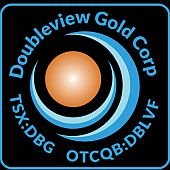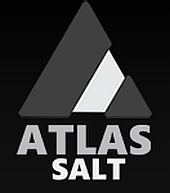 GMV drills 21.3 m of 0.56 g/t gold at Mexican Hat
GMV drills 21.3 m of 0.56 g/t gold at Mexican Hat
GMV MINERALS INC. EXTENDS MINERALIZED ZONES AT THE MEXICAN HAT GOLD DEPOSIT BY 420 METERS-GMV 2016-14 ASSAYS 21.3 METERS OF 0.56 GPT/GOLD INCLUDING 6 METERS OF 1.07 GPT/GOLD
GMV Minerals Inc. has released results from eight of 15 holes in its reverse circulation drill program designed to extend the known mineralization on its Mexican Hat gold property in southeast Arizona. All holes are outside of the existing resource.
The company has extended the known area of its mineralization by another 420 metres. The current National Instrument 43-101 resource was calculated with a 0.2-gram-per-tonne-gold cut-off, so all assays that exceed the cut-off are considered material and further support an open-pit heap-leach extraction model.
The H2 zone (targeted with seven holes) was encountered at shallower levels than expected in all holes, and intersections include: six metres of 0.4 gram per tonne (g/t) gold, six metres of 0.25 g/t gold, nine metres of 0.89 g/t gold and six metres of 0.3 g/t gold, extending the H2 zone 420 metres to the southeast. An additional zone was encountered in GMV 2016-1, three metres of 0.59 g/t gold, and in GMV 2016-2, three metres of 0.29 g/t gold. The 60-degree-striking AN, A, B, C and D zones were not encountered in one hole (GMV 2016-13), but were intersected in a second hole. The results from seven additional holes are pending. GMV 2016-14 encountered multiple mineralized intercepts, including three metres of 1.06 g/t gold, three metres of 1.55 g/t gold and a broad zone of 39.7 metres of 0.38 g/t gold, including nine metres of 0.97 g/t gold and 21.3 metres of 0.56 g/t gold (includes six metres of 1.07 g/t gold). The five 60-degree zones are extended up to 110 metres by the drilling completed to date, with the deepest intercepts being 160 metres below surface.
All holes intersected multiple hematite-bearing zones, typically associated with mineralization. Significant intersections occurred in all holes except GMV 2016-3 and 2016-13, and include those shown in the attached table.
RC Hole From(m)To (m)Interval(m)Gold(gpt) GMV 2016-1 15.2 18.3 3.0 0.59 GMV 2016-1 54.9 57.9 3.0 0.15 GMV 2016-1 57.9 61.0 3.0 0.44 GMV 2016-2 70.1 73.2 3.0 2.20 GMV 2016-2 73.2 76.2 3.0 0.18 GMV 2016-2 76.2 79.2 3.0 0.29 GMV 2016-2 112.8 115.8 3.0 0.23 GMV 2016-4 30.5 33.5 3.0 0.20 GMV 2016-4 33.5 36.6 3.0 0.59 GMV 2016-5 61.0 64.0 3.0 0.15 GMV 2016-5 64.0 67.1 3.0 0.34 GMV 2016-6 12.2 15.2 3.0 0.10 GMV 2016-14 9.1 12.2 3.0 1.06 GMV 2016-14 18.3 21.3 3.0 0.30 GMV 2016-14 27.4 30.5 3.0 1.55 GMV 2016-14 73.2 76.2 3.0 0.32 GMV 2016-14 76.2 79.2 3.0 0.10 GMV 2016-14 243.8 246.9 3.0 0.92 GMV 2016-14 246.9 249.9 3.0 0.06 GMV 2016-14 249.9 253.0 3.0 0.55 GMV 2016-14 253.0 256.0 3.0 0.15 GMV 2016-14 256.0 259.1 3.0 0.09 GMV 2016-14 259.1 262.1 3.0 1.15 GMV 2016-14 262.1 265.2 3.0 0.98 GMV 2016-14 265.2 268.2 3.0 0.07 GMV 2016-14 268.2 271.3 3.0 0.15 GMV 2016-14 271.3 274.3 3.0 0.02 GMV 2016-14 274.3 277.4 3.0 0.36 GMV 2016-14 277.4 280.4 3.0 0.17 GMV 2016-14 280.4 283.5 3.0 0.24
Ian Klassen, GMV’s CEO remarked, “We are pleased to extend the H2 Zone and encounter additional mineralization to the southeast, beyond the previous limits of our resource. GMV 2016-14 encountered multiple intercepts as expected, adding strike length to the established large resource blocks and providing a deeper cut on the VF zone. The balance of the holes includes deeper targeting on the larger 060degreezones as well as another step out to the northeast of GMV 2016-14. We look forward to receiving those assays shortly”.
The Company also wishes to confirm that diamond drilling will commence this week at the Hernandez Hill, a newly discovered epithermal target 500 m northeast of the Mexican Hat mineralization. This target was identified by geology and surficial geochemistry and supported by recent AMT geophysical results.
An expanded program of geophysical and geochemical surveying has been conducted. The AMT surveys have been completed covering the Hernandez Hill area and portions of the Epithermal Zone and have identified higher resistivity anomalies coincident with the mapped silicified domains at Hernandez Hill plus others. This is interpreted to represent extensions of the silicified domains to depth. A soil geochemistry anomaly of elevated mercury, antimony, arsenic and thallium overlies Hernandez Hill. The Company believes that these volatile gold pathfinder elements indicates a high potential for a buried epithermal precious metal deposit. Re-examination and sampling the historical core on site has identified a significant silver intercept in MH 11-12 (128 gpt Ag over 3.04 m with elevated Hg, Sb, W, Tl). This is the closest drill hole to the silicification at Hernandez Hill, 90 m south of southern-most observed chalcedonic quartz in andesite.
Dr. D.R. Webb, Ph.D., P.Geo., P.Eng. is the Q.P. for this release within the meaning of NI 43-101 and has reviewed the technical content of this release and has approved its content.
https://www.gmvminerals.com/news/2017/
































